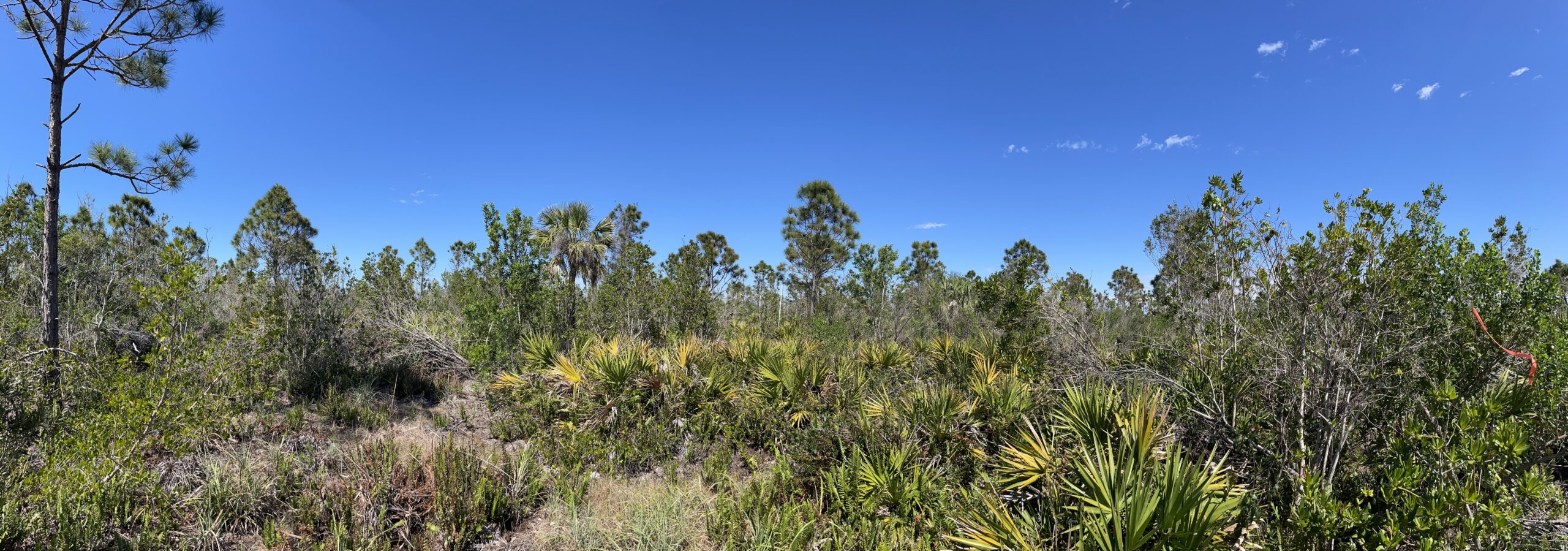What is Environmental Permitting?
Navigating environmental permitting for the land development sectors
Table of Contents
Environmental permitting is a crucial, yet oftentimes challenging, aspect of land development activities. It is intended to minimize the negative impact that development projects have on natural resources, ecosystems, and public health. However, the process requires knowledge of overlapping regulations at the federal, state, and local level, and can easily imperil a project with significant delays and/or fines.
This article outlines important information about the process, including challenges faced by professionals, best practices for collaboration, and key steps to position your project for success.
The Process of Entitlements + Protection
Environmental permitting is seen by many as one of the greatest impediments to development. It plays a significant role in guiding the planning, design, and construction phases of a project by:
- Determining potential environmental impacts caused by a development,
- Ensuring compliance with established environmental laws and agency regulations,
- Influencing development intensity, configuration and alignments,
- Establishing appropriate mitigation measures to align with local, state, and federal guidelines.
Permitting Challenges
In Florida, land development projects often incorporate stormwater management, listed species protection, wetland resource management, coastal and shoreline design, and habitat conservation. These considerations increase the complexity of the environmental permitting process.
Professionals developing projects in Florida face challenges such as:
-
Navigating complex regulatory frameworks.
Maneuvering through multiple layers of federal, state, and local regulations can be difficult and time-consuming. -
Avoiding costly fines and penalties by ensuring regulatory compliance.
Adhering to numerous environmental regulations is crucial to avoid fines, penalties, and delays. -
Balancing time and cost considerations.
Professionals must balance time and budget constraints with the need to conduct thorough environmental assessments. -
Addressing unique ecological concerns.
Florida's diverse ecosystems, including coastal areas, karst geology, wetlands, and endangered species habitats, demand careful consideration and tailored mitigation strategies. -
Coordinating with multiple agencies and stakeholders.
Projects often require consultation and approval from various agencies, such as the U.S. Army Corps of Engineers, the U.S. Fish and Wildlife Service, the Florida Department of Environmental Protection, and Water Management Districts in addition to various state and local authorities, communities and special interest groups.
Key Steps for Success
In addition to federal and state regulations, each of Florida’s 67 counties have their own set of environmental protection laws and permitting requirements. As a result, navigating the process in Florida can be a complex and time consuming endeavor, with permits potentially taking months or years to obtain depending on the project’s scope of work and environmental considerations.
To ensure the successful development for residential subdivisions, commercial developments, roadway expansions, energy infrastructure, and recreational facilities projects, professionals must plan strategically and follow a series of key steps, outlined below:
-
Conduct environmental site assessments and due diligence.
Perform ground truth studies and gather data to assess the potential environmental impact of your project, which help inform the permitting process. -
Identify necessary permits and entitlements.
Determine which permits are required for your project based on factors such as location, size, and potential environmental impact. -
Establish a clear permitting strategy.
Develop a well-defined plan for obtaining necessary permits and entitlements. Expenditures should align with permitting objectives and timelines. -
Implement species and site specific environmental surveys and reviews.
Conduct comprehensive surveys to identify and address potential environmental concerns. -
Prepare, submit and maintain permits.
Develop detailed permit applications, submit to regulatory agencies, address feedback, and maintain approved permits throughout the project's duration. -
Build strong working relationships with regulatory agencies and stakeholders.
Engage with relevant stakeholders early in the project planning process to identify potential issues, streamline permitting, and minimize delays.
Collaboration is Key
Collaboration between diverse teams of experts, including urban and regional land planners, ecologists, environmental attorneys, engineers, and surveyors, can result in increased permitting efficiency and improved conservation outcomes. These best practices can guide a collaborative mindset:
-
Partner with experienced, client-advocating environmental consultants.
Environmental consultants are permitting experts who can ensure that project needs are met while balancing regulatory requirements, in addition to identifying potential risks and key mitigation measures. -
Consider professionals that operate with interdisciplinary in-house capabilities.
When undergoing the permitting process, integrative collaboration encourages professionals of varying expertise to build off of each others’ ideas, creating thoughtful, innovative solutions that maximize economic outcomes while minimizing environmental impacts. -
Seek organizations that engage in and encourage ongoing professional and educational development.
Staying current with environmental regulations, industry best practices, and innovative technologies ensures the use of the most effective strategies for environmental management and permitting.
Expertise in Preparing Your Site for Success
With over 50 years of combined experience, our diverse team of trusted permitting experts has a proven track record of client advocacy, navigating complex regulatory frameworks and effectively preparing project sites for development across Florida.
CHW's Environmental Permitting Team
Success Stories
Wetland Mitigation Bank Ecological Services
Beginning in the mid 1990’s, Andy Woodruff, CHW’s Professional Wetland Scientist and FDEP authorized Mitigation Supervisor, was involved with the inception of Little Pine Island Mitigation Bank (LPIMB) in Lee County, Florida. Our team’s current involvement ensures the continued restoration and permit compliance of this 1,600± acre wetland mitigation site, which was negatively impacted by invasive species and drainage in the 1960s.
 Little Pine Island in March of 2023
Little Pine Island in March of 2023
The $22 million restoration project was developed as a public/private partnership in collaboration with the Florida Department of Environmental Protection and is currently managed by LPI Wetland Mitigation Bank, Ltd. In 1997, LPIMB received one of Florida’s first Mitigation Banking Instruments (MBI). Restoration activity was completed in 2015. The revitalized wetlands now boast well-balanced vegetation communities, a dramatic increase in wildlife habitats, and increased biodiversity. Little Pine Island is one of the most outstanding examples of mitigation transformations and is part of the Great Florida Birding Trail and the Great Calusa Blueway.
CHW’s role in this project includes providing mitigation oversight, success criteria monitoring and reporting, GIS habitat mapping, MBI agency modification and coordination, and client representation.
Through our services, we help ensure the long-term success and sustainability of Little Pine Island, a highly successful mitigation bank site that is preserving valuable habitats and providing cost-effective mitigation options for developers.
Hammock Oaks along with The Reserve at Hammock Oaks is a Mixed-Use Development on ±732 acres that lies between County Road (CR) 466 and Lake Ella Road and between Cherry Lake Road and Rolling Acres Road in Lady Lake, Florida. This high-quality development includes approximately 2,500 residential units consisting of market-rate single-family homes, age-restricted single-family homes, townhomes, and multi-family apartments with a network of multi-use trails connecting residents with adjacent commercial development and a plentiful amount of internal amenity areas. The project has been carefully designed to fit naturally into the landscape by working with and not against the rolling topography and preserving the existing Oak Hammock and significant trees onsite.
Owner: Kolter Group
Single Family Residential / Townhomes: ±2,175 units
Multifamily Residential: ±300 units
Retail: ±65,000 SF
Project Status: All future phases through 2028
Hammock Oak Phases 1 & 2: Under Construction
The Reserve Phase 1: Design and Permitting, Construction to begin in January 2024
Discover the wealth of experience and specialized skills that our team members bring to every project. Their unique backgrounds and unwavering dedication to client advocacy have allowed CHW to build and maintain 30+ year relationships with our partners and communities.
Conclusion
Environmental permitting is critical to the success of projects in infrastructure development, urban planning, and land management, as it ensures compliance with legal regulations, minimizes environmental impact, and fosters sustainable development. To effectively navigate the environmental permitting process, a strategic approach and collaboration with multi-disciplinary experts is essential.
Our team has a 35-year history of success in skillfully navigating the complex regulatory landscapes that govern land development activities. CHW’s permitting team provides outstanding outcomes for developers, communities, and the environment in tandem.

